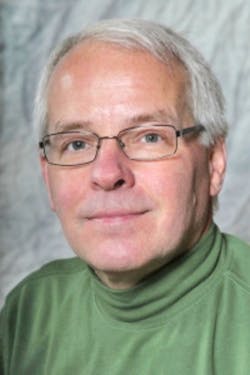AM signals: Si-anode batteries, quantum test, Thanksgiving deliveries
Supercomputing simulations at the Department of Energy’s Oak Ridge National Laboratory could change how researchers understand the internal motions of proteins. The team’s results are published in Nature Physics. “Proteins have never been seen this way before,” said coauthor Jeremy Smith, director of ORNL’s Center for Molecular Biophysics and a Governor’s Chair at the University of Tennessee (UT). “We used considerable computer power to provide a unified conceptual picture of the motions in proteins over a huge range of timescales, from the very shortest lengths of time at which atoms move (picoseconds) right up to the lifetimes of proteins in cells (roughly 1,000 seconds). It changes what we think a protein fundamentally is.”
The market for silicon-anode batteries will reach $4 billion by 2026, according to Franco Gonzalez, senior technology analyst, IDTechEx. He notes that Elon Musk recently announced the use of silicon by Tesla in its automotive batteries, quoting him as saying, “This is just sort of a baby step in the direction of using silicon in the anode, but we will be increasing the use.” Silicon anodes can increase overall battery capacity by 35% but can degrade lifetime and cyclability.
In the paper “Quantum Process Tomography of an Optically-Controlled Kerr Non-linearity” published in Scientific Reports, a Stony Brook University research team has developed new tools to test the fundamental constituents of a quantum information processor—much as one would connect a spectrum analyzer to a traditional electronics circuit. “By employing this method, we could develop a scalable and resource moderate way to test and improve quantum components,” explained Professor Eden Figueroa.
Microsemi said it will buy chip maker PMC-Sierra Inc. for $2.5 billion, forming a company offering storage and communications products. Microsemi chief executive James Peterson said, “As we integrate the team and drive profitability, our combined company will benefit from increased scale, industry-leading margins, diversified market exposure, consolidated infrastructure, and substantial cost savings,” as reported in the Wall Street Journal.
The Journal also takes a look at companies striving to deliver turkeys and wine within an hour to meet your holiday needs. One Los Angeles resident is looking forward to a six-hour shift on Thanksgiving with the beverage delivery company Saucey Inc. “I see my family all the time so it’s not a big deal if I miss out on Thanksgiving,” he said. “People say L.A. has really bad traffic, but Thanksgiving is one of the least trafficky days of the year. It’s kind of magical.”
About the Author

Rick Nelson
Contributing Editor
Rick is currently Contributing Technical Editor. He was Executive Editor for EE in 2011-2018. Previously he served on several publications, including EDN and Vision Systems Design, and has received awards for signed editorials from the American Society of Business Publication Editors. He began as a design engineer at General Electric and Litton Industries and earned a BSEE degree from Penn State.
